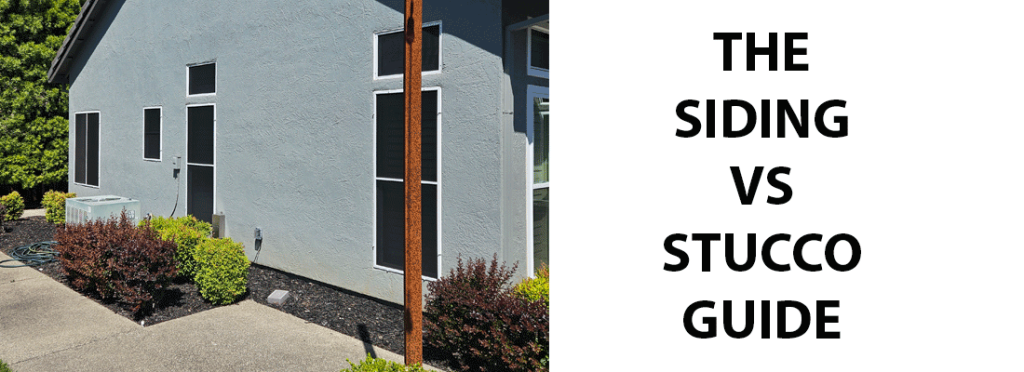Choosing the right exterior finish for your home is a big decision. Stucco and siding are two of the most common options, each with unique benefits and drawbacks. Stucco offers a classic, seamless look, while siding provides versatility and affordability. In this blog, we’ll explore their differences in longevity, cost, maintenance, and environmental impact, helping you decide which option best suits your home.
What is Stucco?
Stucco is a cement-based material applied in layers to create a durable and textured exterior. It has been used for centuries and remains a popular choice, especially in dry and warm climates. It consists of cement, sand, lime, and water, forming a solid shell when hardened. Stucco siding is known for its smooth or textured finish, providing a sleek, modern look.
What is Siding?
Siding refers to a variety of materials, including vinyl, wood, fiber cement, and metal, that cover the exterior of a home. It comes in panels or boards, offering an easy installation process. Siding is available in multiple colors and styles, allowing homeowners to customize their home’s appearance.
Comparing Stucco and Siding for Longevity
When it comes to durability, stucco has a long lifespan, often lasting 50 years or more with proper maintenance. However, it is prone to cracking, especially in regions with shifting foundations. Siding, depending on the material, lasts anywhere from 20 to 40 years. Vinyl siding may need replacement sooner, while fiber cement siding can last nearly as long as stucco.
Cost Differences: Stucco vs. Siding Installation and Maintenance
If you’re wondering, is stucco more expensive than siding?—the answer is generally yes. Stucco installation requires more labor and materials, making it a costlier choice. Siding, particularly vinyl, is more budget-friendly and easier to install. Maintenance costs vary, with stucco needing occasional repairs and painting, while siding might require cleaning and occasional panel replacements.
Maintenance Requirements for Stucco vs. Siding
Stucco siding requires regular inspections for cracks and moisture damage. Repairs can be labor-intensive, requiring patches and new coatings. Siding maintenance depends on the material; vinyl siding needs occasional power washing, while wood siding requires repainting and sealing to prevent rot.
Environmental Impact: Stucco and Siding Sustainability
Stucco is made from natural materials, making it an eco-friendly option. However, its production process consumes energy. On the other hand, vinyl siding is less sustainable due to its plastic content, but fiber cement siding offers a greener alternative. Homeowners looking for an environmentally friendly option should consider the sustainability of each material before making a decision.
Conclusion
Both stucco and siding offer unique benefits, making the choice dependent on your budget, maintenance preferences, and climate. If you want a long-lasting, elegant exterior, stucco may be the right pick. If affordability and versatility matter more, siding is a great choice. For expert guidance and professional installation, reach out to LAR Construction and Remodeling.

